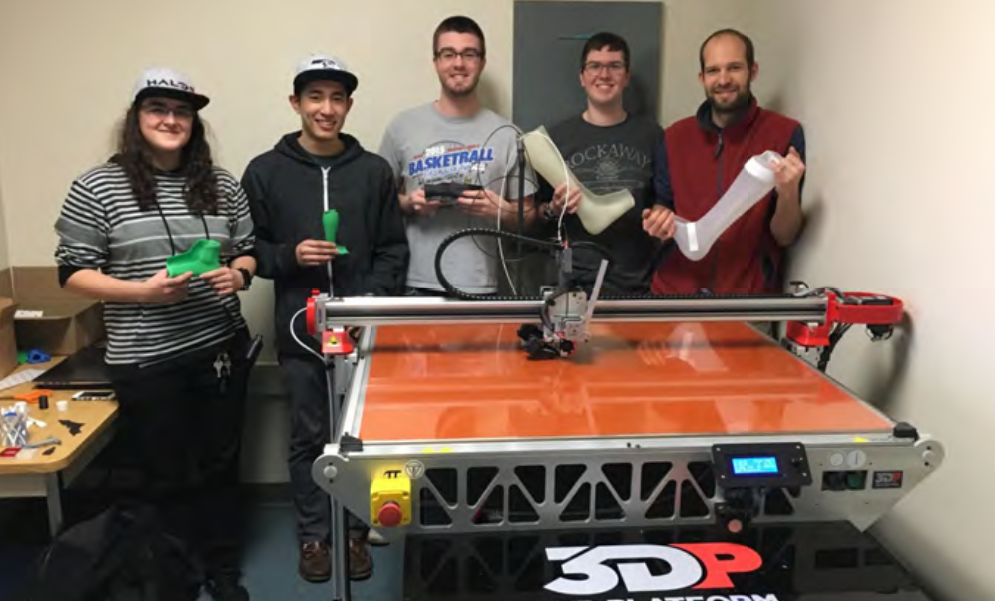Gonzaga Engineering Students 3D Print Child-sized AFOs

Gonzaga students pose with the results of their work and the AM system that made it possible. Courtesy of Gonzaga.
Latest News
June 20, 2016
A common refrain about additive manufacturing (AM) is that it allows for nearly unprecedented levels of design freedom. AM allows for the design and manufacture of objects with complex internal geometries, parts with overhang, and it allows for the production of single-build complex parts. The potential to deliver complex designs is one selling point for 3D printing, but sometimes simplicity is another.
A group of Gonzaga University engineering students recently demonstrated how important the idea of simplicity can be for specific objects. In this case, the students developed a method for 3D printing child-sized ankle foot orthosis (AFO). An AFO is a type of brace that assists people diagnosed with spina bifida, muscular dystrophy, cerebral palsy, physical deformity and other genetic or neurological disorders.
 Gonzaga students pose with the results of their work and the AM system that made it possible. Courtesy of Gonzaga.
Gonzaga students pose with the results of their work and the AM system that made it possible. Courtesy of Gonzaga.From Gonzaga:
These leg braces assist children with poor muscular control and allow them to walk. By creating a 3D printing manufacturing process, we can reduce both the time and cost of these important braces. We did tensile and fatigue testing to determine the best materials to print with and determined an overall process for getting a 3D scan to a completed product using different software and our 3DP1000 large-format 3D printer.
The usual process for fabricating an AFO requires several hours of fitting, followed by a week or two of production time, then a second fitting session to make alterations for user comfort. The fitting procedure is generally done by creating a cast of the patient’s leg, which is then used as the model for the final AFO. These specialized braces cost anywhere from $300 to $2000, and AFOs intended for children are even more of a specialty item.
The Gonzaga students tested a number of different materials, and eventually selected PLA and PETG as those that would provide the best combination of comfort and durability. A 3D printed AFO can be produced in as little as 16 hours, including the time required to ensure a proper fit. While you may not want to sit and watch a 16-hour print, that’s still a massive improvement over the previous weeks-long method.
The end result is a simple enough looking brace that can improve the life of a wearer. In this case, the simplicity offered by digital design and production is better than any amount of complexity offered by the standard method of production. Below you’ll find a video demonstration of how AFOs are usually created.
Source: Gonzaga
Subscribe to our FREE magazine, FREE email newsletters or both!
Latest News
About the Author
John NewmanJohn Newman is a Digital Engineering contributor who focuses on 3D printing. Contact him via [email protected] and read his posts on Rapid Ready Technology.
Follow DE





